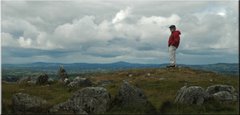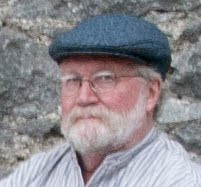This old photo from the summer of 1882 played a big part in the latter portion of that article:
 I now know a lot more about the photo than I did two days ago, thanks to A Summer of Hummingbirds by Christopher Benfey (2008, Penguin). For starters, "The Shutesbury School..." is the title of the photograph, not the group, though the group named the photo. It's an homage to Raphael's "The School of Athens":
I now know a lot more about the photo than I did two days ago, thanks to A Summer of Hummingbirds by Christopher Benfey (2008, Penguin). For starters, "The Shutesbury School..." is the title of the photograph, not the group, though the group named the photo. It's an homage to Raphael's "The School of Athens": Raphael's "School of Athens." Click on the image for a much larger image, which is a delight to peruse.
Raphael's "School of Athens." Click on the image for a much larger image, which is a delight to peruse.The photo was taken immediately after the group of friends had enjoyed a picnic outing to the small town of Shutesbury in the hills near Amherst. It was taken in the Main Street studio of John Lovell, who was a prominent photographer of that time and place. I was evidently wrong about identifying the young lady with the revolver as Susan Dickinson; Mrs. Dickinson, instead, is the woman near the center holding a child on her lap. Benfey identifies most of the eleven this way:
"Five women pose behind five seated men. Mabel [Todd], dressed in white with a large feathered hat, presides. Seated next to her is Susan Dickinson, entirely maternal, with her younger son, Gib, in her lap. The studio backdrop features a light-filled French window opening to the left and a contrasting dark fireplace to the right. A young woman stands in the window, with a Colt revolver in her hand, pointed playfully at Mabel. David Todd sits hunched in front of the fireplace, as though he has just crawled out of it. In front of him Ned Dickinson lies propped on the floor, mimicking Raphael's Diogenes, his tennis racket in front of him. Another Amherst student, William Clark, sits guarding the large picnic basket, slightly open like Pandora's box."
If that quote sounds like something an art critic would write, there's good reason for that. In addition to being a Professor of English at Mount Holyoke College and a book reviewer for several prestigious publications, Benfey "serves as a regular art critic for the online magazine Slate," according to his book's dust jacket. Being a book reviewer for the New York Times didn't prevent his book from being pretty well savaged there, though -- unless a book's substance being compared to cotton candy and its import to that of a carnival ride is now considered to be positive.
So who is the woman with the gun? The Yale archives list five women, so the three others must be "Miss Mattie Dickinson," "Miss Allie Mather," and "Miss Bessie Marvin." Since Mabel and Susan are listed as "Mrs," about all I can say about revolver-gal is that she's a Miss.
Benfey also implies that Mabel Todd's "affair" with Austin and Susan Dickinson's son -- Ned, the one with the tennis racket in the photo -- was not one of active sexuality, as other sources imply it was (and I did in the previous post.) Instead, young Ned became very infatuated with Mabel, and this infatuation wasn't discouraged at all by either family. "It was felt," writes Benfey, "by both Ned's parents and the Todds that such a sentimental attachment to a mature woman was good for the young man and harmless for Mabel herself. It was an apprenticeship of sorts. 'He likes Ned,' Mabel wrote of her husband, 'and he thinks it a good thing for him to be under my influence.'" That "apprenticeship of sorts," to me, would be like putting training wheels on a Harley-Davidson and calling it a "practice bicycle."
And Mabel's soon-to-start affair with Austin was of course entirely different.
I posted a copy of "The Shutesbury School..." picture on my Flickr account. One of my favorite photographers on Flickr, a woman whose handle there is "chocolatepoint," immediately recognized the strong similarity it bears to a mural on a wall in Amherst facing the graveyard which contains the Dickinson plot, which you can see in the comments here.
Chocolatepoint did some quick research on the mural and found its brochure available online. While the brochure didn't provide much more information about the photograph than we already had, chocolatepoint also found a great treasure available at the Amherst Historical Commission website: a downloadable file containing full text and pictures from the 1894 Handbook of Amherst, Massachusetts, published by Frederick Hitchcock.
 Amherst College's Morgan Hall, 1890's, probably by John Lovell, as it appears in the 1894 edition of The Handbook of Amherst, Massachusetts. A library at the time the photo was taken, Morgan Hall is now the home of the College's Bassett Planetarium, the first room in which I ever took a college astronomy course.
Amherst College's Morgan Hall, 1890's, probably by John Lovell, as it appears in the 1894 edition of The Handbook of Amherst, Massachusetts. A library at the time the photo was taken, Morgan Hall is now the home of the College's Bassett Planetarium, the first room in which I ever took a college astronomy course.After having read a good deal of it -- and loving every word and picture, as an old geezer who has a very, very soft spot for Amherst would love -- it's clear why the Handbook was "published by" Hitchcock instead of simply "by" him: there's a chapter in it that he didn't write.
The chapter is called "The Connecticut Valley," about the natural history and human history of the larger part of Massachusetts of which Amherst, Northampton, and the surrounding towns are part.
It was written by Mabel Loomis Todd, and it surprised me.
I don't know what I was expecting, but the writing is tight without being terse, romantic without being flowery, informative without the scent of pedantry, and not strange. It holds up very well twelve decades later, better than Hitchcock's does, at any rate. I would really like to see a modern assessment of the "natural history" of the Valley that she presents so confidently, though.
Finally, just for Demitria McDuff because I promised it to her, a photo of Mabel Loomis Todd later in life. She was always a knockout:



No comments:
Post a Comment